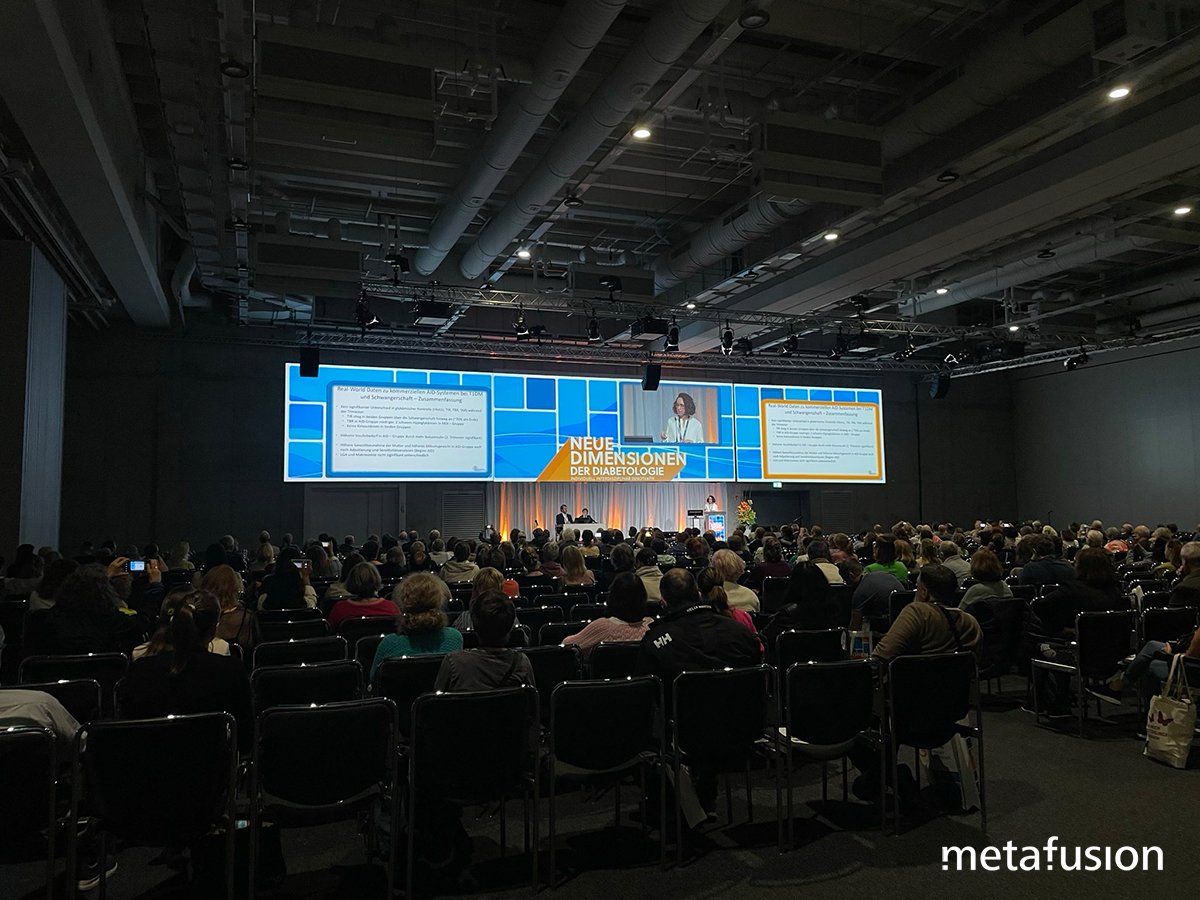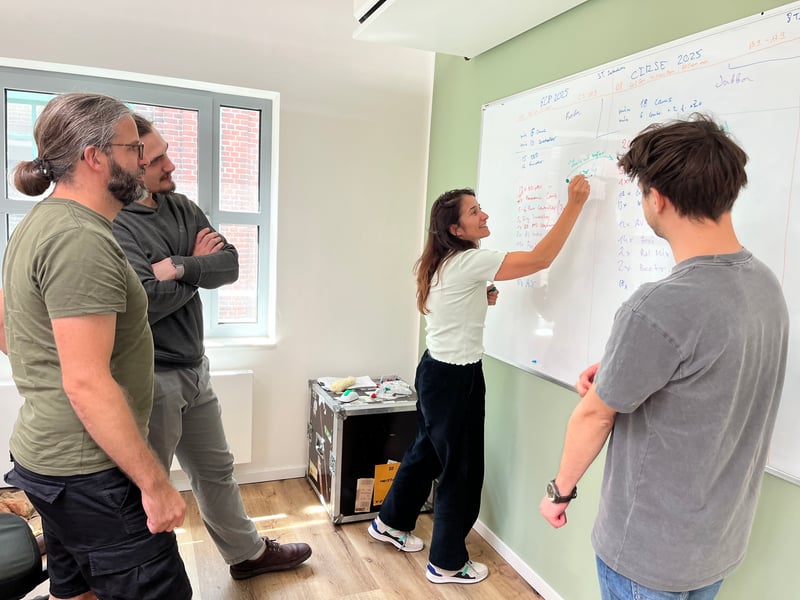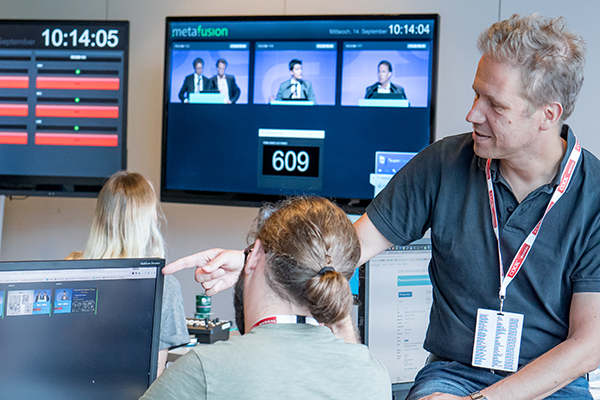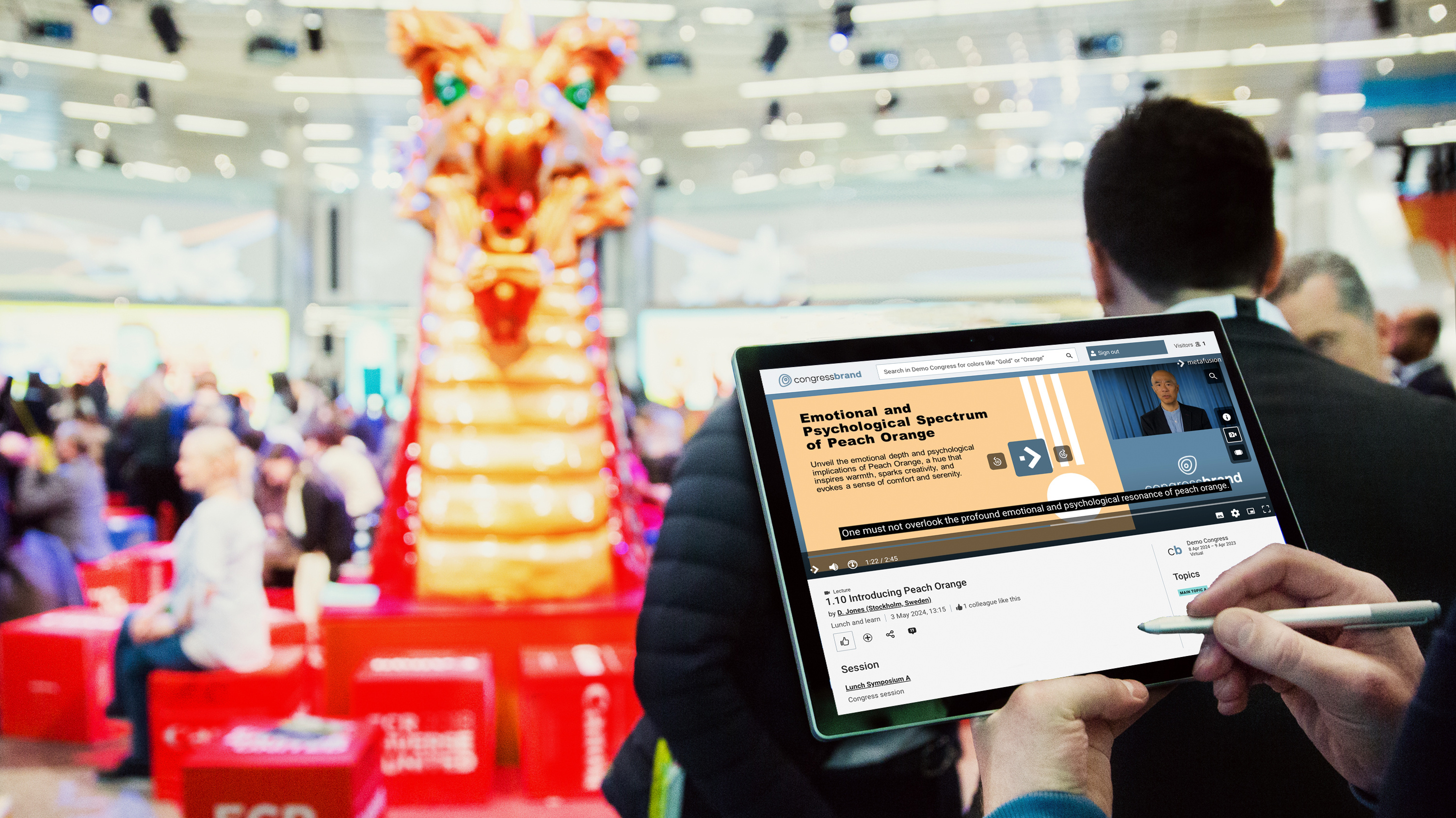Webcast production – From initial planning to the 365 video platform
Why I’m Glad Live Streams Exist – Both On Stage and On Site
I’ve always had a passion for music. In my younger years, I played in a few bands and spent many weekends at live gigs. Back then, festivals like Rock am Ring were a must – tents, mud, and all. Today, with a family and all the joyful chaos that comes with it – birthday parties, school events, in-laws’ anniversaries – attending a weekend-long festival has become… let’s say, logistically ambitious.
Fortunately, times have changed. These days, even large-scale festivals are streamed live. And yes, I may or may not have followed my favourite band’s headliner set – quietly, on my phone, hidden behind the barbecue at a garden party.
In my professional life, it’s surprisingly similar. Of course, there’s no birthday cake involved – but I often see the same principle at work. People want to attend important congresses or specialist meetings, but there are conflicts: overlapping schedules, long-distance travel, or simply the fact that there’s only one of them and multiple sessions at once.
This is exactly where a webcast comes in.
It ensures that no valuable content is missed – whether you're on-site, working remotely, or catching up later from your desk or sofa. In the following article, I’ll walk you through how webcast production can be integrated into your event without disruption, and what is needed to make it work smoothly – both technically and organisationally.
Content
Webcast Integration in existing Event Structures
Key Benefits for congress organisers
Step-by-Step: From Request to Final Delivery
Modularity Enables Flexibility
Compatibility With Existing Event Structures
Summary: A Structured Approach to Extending Your Event’s Reach
Webcast Integration in Existing Event Structures – Modular, Reliable, Unobtrusive
The decision to include a webcast element in a live event – whether as a live stream, recorded session archive or structured on-demand library – raises a number of questions for organisers. For many, it is still unfamiliar territory, often associated with added complexity, unpredictable costs, and the risk of interfering with already well-established event processes.
This article aims to outline how webcast services can be introduced without disrupting existing workflows – and how a modular approach can support a wide variety of event formats and technical conditions.
Why Consider a Webcast?
A webcast allows content from on-site events to be made available to remote participants in real time or for later access. In the context of medical and scientific congresses, this enables broader dissemination of expert knowledge – both during and after the event.
Depending on the setup, a webcast can serve different purposes:
-
Live streaming of individual sessions or the entire congress programme
-
On-demand access to selected presentations, available shortly after delivery
-
Structured video libraries for long-term content access and citation
-
Integration into congress platforms or stand-alone microsites
Importantly, these options are not mutually exclusive. They can be combined and adapted to suit the needs of each individual event.

Key Benefits for Organisers
Webcast services offer several long-term advantages beyond simple content capture. These include:
Sustainable Knowledge Documentation
Recorded sessions become a lasting scientific resource. On-demand archives allow attendees and non-attendees alike to revisit important content, fostering continued learning well beyond the event itself.
Support for e-Learning Strategies
Webcast content can be repurposed for e-learning modules, certification programmes, or blended learning offerings. Structured metadata and speaker indexing facilitate efficient reuse.
Member Retention and Growth
Providing valuable digital content increases the perceived value of membership in scientific societies or organisations. Easy access to high-quality lectures can be a decisive factor for renewals – and an incentive for new members to join.
Monetisation Opportunities
Video content can be used in various monetisation models, including:
-
Post-event access passes (pay-per-view or subscription)
-
Sponsored access to selected sessions
-
Integration in continuing education platforms with paid access
-
Cross-promotional campaigns with industry partners
Extended Reach and Inclusivity
Live and on-demand formats enable participation across geographic, time zone and accessibility barriers. This is particularly relevant for global audiences or individuals unable to travel for personal or professional reasons.
Strategic Content Planning
Webcast analytics provide valuable insight into user behaviour, allowing organisers to understand which topics or speakers generate the most engagement – data that can inform future programme development or marketing efforts.
Content for Industry Partners
Sponsors and exhibitors benefit from broader content exposure. Webcast recordings can be integrated into industry portals, used in follow-up communications, or included in internal training.
Step-by-Step: From Request to Final Delivery
To ensure smooth integration, it is helpful to understand the typical stages of a webcast project:
1. Initial Request
At this early stage, organisers define the framework:
-
Event location and dates
-
Number of rooms to be covered
-
Type and scope of coverage (live, on-demand, video only, etc.)
-
Platform requirements (e.g. embedded widgets or dedicated website)
-
Access control options (e.g. open access, login code, SSO integration)
-
Method for providing programme data (e.g. synchronised API connection, manual file exports)
2. Technical Coordination
In parallel to programme planning, key technical aspects should be clarified:
-
Availability of space for camera equipment and technical staff
-
Provision of audio and video feeds per room
-
Power supply and networking (dedicated VLAN with Internet uplink)
-
Contact to venue IT support for firewall and port settings
-
Suitable lighting at lectern and podium
This step also includes coordination with other trades such as AV providers, interpreters, and stage management.

3. Production Preparation
Before the event, the webcast team will request materials to enable efficient planning:
-
Room layouts and floor plans for equipment placement and cabling
-
Visual design elements (logos, slides, banners, colour codes)
-
Technical documentation for network infrastructure
In most cases, a central, secure production office should be made available within the venue.
4. On-Site Implementation
The webcast setup usually requires one full day prior to the start of the event. The team installs and tests the system in coordination with all involved parties. During the event:
-
Camera signals are monitored or operated depending on the room and format
-
Presentations are captured in full length
-
Live streams are broadcast according to schedule
-
Technical supervision is provided both locally and remotely
Sessions are processed immediately after recording and made available on-demand – usually from a dedicated postproduction facility.

5. After the Event
Following the event, the webcast team:
-
Finalises on-demand content
-
Applies minor requested edits where applicable
-
Completes project documentation and invoicing
A debriefing can be arranged upon request.
Modularity Enables Flexibility
One of the key principles in modern webcast production is modularity. This means that services can be selected and combined depending on actual needs, resources, and the event profile. Typical configuration options include:
|
Scenario |
Possible Components |
|
Scientific lectures |
1-camera recording, central monitoring, on-demand publication |
|
Interactive discussions |
2-camera production, live-streaming, operated cameras |
|
Award ceremonies |
Manned multi-camera production, live direction |
|
Remote participation |
Integration of remote speakers, hybrid formats |
|
Platform presence |
Widget-based integration or dedicated website |
|
Content access |
Open access, login protection or full SSO integration |
Would you like to read more about the camera scenarios and their recommended use cases, read the article about On-site Video Production – Which One Is Right for My Webcast Project?
The modular concept also allows for adaptation to the specific conditions of different venues – e.g. limited space in rooms, variable network infrastructure, or tight production schedules.
Compatibility With Existing Event Structures
A frequently voiced concern among organisers is whether a webcast will interfere with other aspects of the event. This is understandable, particularly when the event involves multiple providers, complex room logistics, or strict security policies.
The good news: webcast production can be designed to run alongside existing processes without requiring significant changes.
Key aspects that ensure compatibility:
-
Minimal interference with room setup and programme flow
-
Defined responsibilities and coordination protocols
-
Use of existing infrastructure wherever possible
-
No additional burden on the event organiser’s core team
In short: webcast production should be an integrated component, not a disruptive add-on.
Summary: A Structured Approach to Extending Your Event’s Reach
Webcast services offer significant benefits for knowledge dissemination, audience retention, and content strategy – without requiring fundamental changes to how events are run.
Organisers retain full control over scope, access, and presentation – while unlocking long-term value from their event content.
To support the planning process, we offer a concise one-page checklist with the most relevant technical and organisational considerations.
Ready to explore how webcasting can extend your congress experience without extending your workload?
And now let's make music together or let’s talk. We’ll show you how effortless it can be.
Get our newsletter
You May Also Like
These Related Stories

On-site Video Production – Which One Is Right for My Webcast Project?

Event Website Optimisation: A Comprehensive Guide







No Comments Yet
Let us know what you think